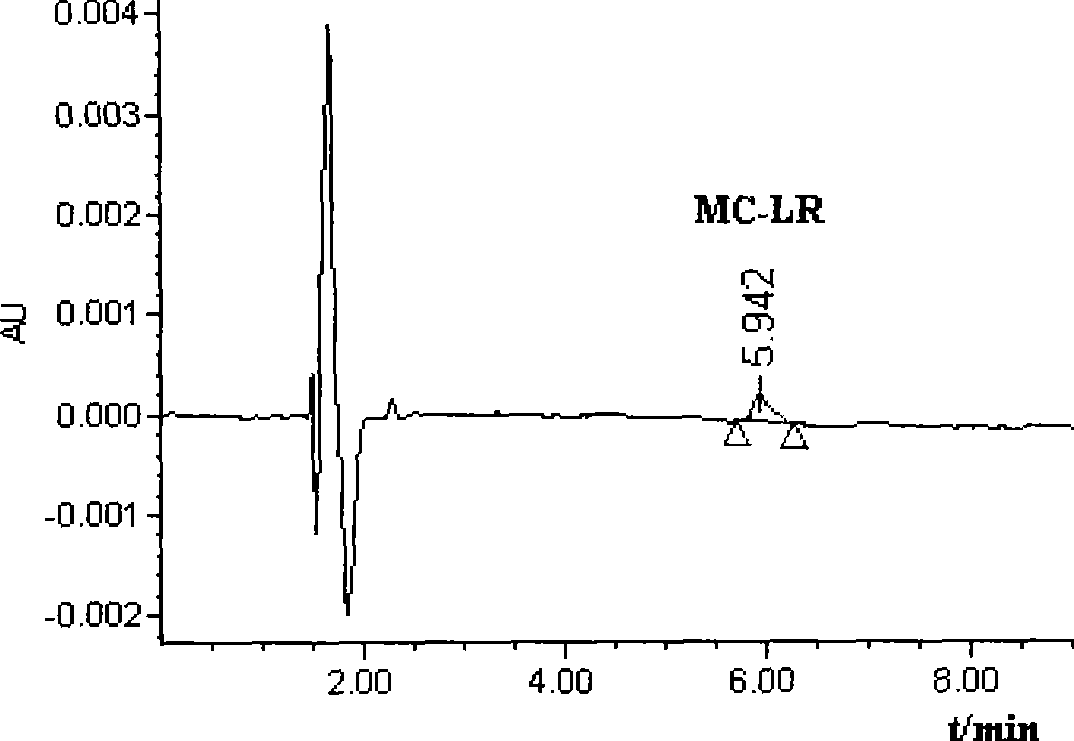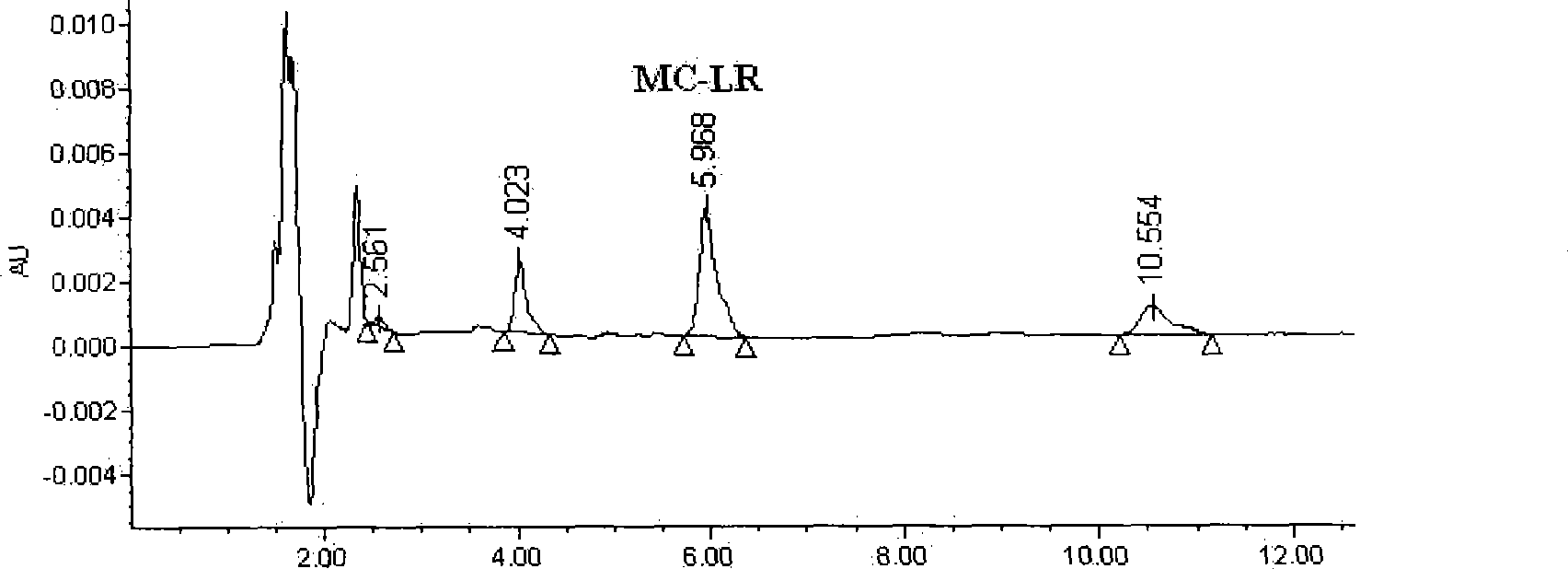Preparation and use method of microcystin-LR polyclonal antibody immunoaffinity column
A technology of microcystin and immunophile, which is applied in the direction of measuring devices, instruments, scientific instruments, etc., can solve the problems of high price, low detection limit, interference detection results, etc.
- Summary
- Abstract
- Description
- Claims
- Application Information
AI Technical Summary
Problems solved by technology
Method used
Image
Examples
Embodiment 1
[0039] Example 1: Preparation of MC-LR polyclonal antibody
[0040] 1. Synthesis of complete antigen
[0041] (1) Synthesis of MC-LR-BSA immunogen
[0042]The synthesis of the complete antigen MC-LR-BSA adopts the water-soluble carbodiimide method, using 1-ethyl-3 (3-dimethylaminopropyl) carbodiimide (EDC) as a "bridging agent" to make MC The carboxyl group (-COOH) of -LR reacts with EDC to generate an intermediate product, and then reacts with the amino group on the BSA protein molecule to make a complete antigen MC-LR-BSA conjugate as an immunogen. The synthesis method is as follows:
[0043] Dissolve 0.5mg of MC-LR in 0.5mL of methanol, divide it into two equal portions of 0.25mL, pass nitrogen gas, and evaporate to dryness at 35°C. One portion containing 0.25 mg of MC-LR was dissolved in 1 mL of PBS (pH 7.4) buffer, 5 mg of EDC was added, shaken until completely dissolved, adjusted to pH 5 with 0.1 M hydrochloric acid solution, and stirred slowly at room temperature for...
Embodiment 2
[0053] Example 2: Activation of Sepharose 4B
[0054] Sepharose 4B was activated by the cyanogen bromide method. The cyanogen bromide method has good activation effect, high coupling rate, and little effect on antibodies. The activation process is as follows:
[0055] (1) Take 10mL Sepharose 4B and put it in a Buchner funnel to drain it, wash it twice with 30mL water and drain it, add a small amount of 0.1mol / L NaHCO with pH8.3 3 After washing, immediately transfer to a 100mL beaker and stir slowly under ice bath.
[0056] (2) Weigh 1g of cyanogen bromide in a fume hood, add 10mL of water to dissolve, then pour into agarose in batches, stir while adding, and measure the pH value at the same time, and keep the pH at 10.5 by adding 2mol / L NaOH dropwise about. After the cyanogen bromide has completely reacted and the pH remains basically unchanged, the stirring can be stopped.
[0057] (3) Add the activated Sepharose 4B into small ice cubes, quickly pour it into the Buchner f...
Embodiment 3
[0058] Example 3: Preparation of MC-LR polyclonal antibody IAC
[0059] The MC-LR polyclonal antibody is coupled with Sepharose 4B to obtain an affinity adsorbent, which is filled into the column to prepare the MC-LR polyclonal antibody immunoaffinity column. The operation steps are as follows:
[0060] (1) Coupling
[0061] Place the MC-LR polyclonal antibody prepared and purified above in 0.1M NaHCO containing 0.5M NaCl at pH 8.3 3 The buffer was dialyzed against the coupling buffer for 12 h. Put the above-mentioned activated Sepharose 4B gel in a sand core funnel and quickly wash it with the coupling buffer, then quickly pour it into the MC-LR polyclonal antibody solution for coupling, and monitor the coupling process by UV scanning. Wash away the unconjugated anti-MC-LR polyclonal antibody with more than 5 times the volume of coupling buffer to obtain the agarose-antibody coupling complex. All the eluates were collected, and the amount of uncoupled MC-LR polyclonal anti...
PUM
 Login to View More
Login to View More Abstract
Description
Claims
Application Information
 Login to View More
Login to View More - R&D
- Intellectual Property
- Life Sciences
- Materials
- Tech Scout
- Unparalleled Data Quality
- Higher Quality Content
- 60% Fewer Hallucinations
Browse by: Latest US Patents, China's latest patents, Technical Efficacy Thesaurus, Application Domain, Technology Topic, Popular Technical Reports.
© 2025 PatSnap. All rights reserved.Legal|Privacy policy|Modern Slavery Act Transparency Statement|Sitemap|About US| Contact US: help@patsnap.com



